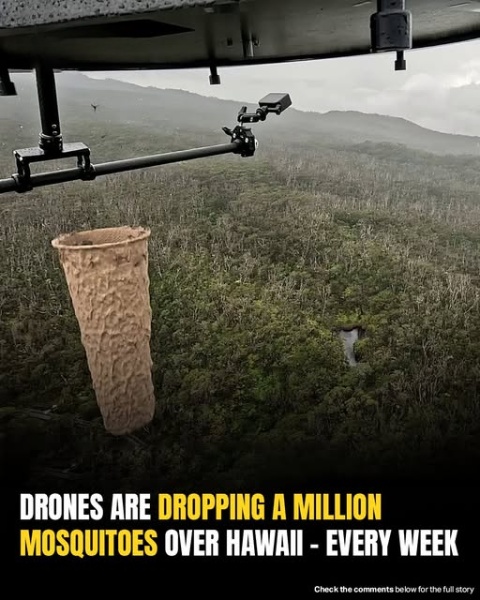A bizarre war is happening in Hawaii — and it involves drones, rare birds, and mosquito w*rfare 🦟😨 I was pis*ed at this move before I saw why they actually do it 👇🫢 Full story in the comments 👇👀
In a groundbreaking effort to save Hawaii’s native birds, drones released biodegradable pods containing lab-raised male mosquitoes over the islands’ forests in June. Each pod holds about 1,000 non-biting mosquitoes infected with a natural bacteria called *Wolbachia*. When these males mate with wild females, the eggs don’t hatch—helping reduce the invasive mosquito population threatening endangered birds like the Hawaiian honeycreepers.
Hawaiian honeycreepers, once numbering over 50 species, are now down to just 17, with most endangered. Species like the ‘akekeʻe and ‘akikiki are on the brink of extinction due to avian malaria, spread by mosquitoes introduced in 1826.
As climate change pushes mosquitoes into higher elevations once safe for birds, conservationists are racing against time. “If we don’t break that cycle, we’re going to lose our honeycreepers,” says Dr. Chris Farmer from the American Bird Conservancy.
The team uses the Incompatible Insect Technique (IIT), releasing millions of infected male mosquitoes from helicopters and now drones. The aerial method cuts costs, lowers emissions, and allows better timing in Hawaii’s unpredictable weather.
Currently, 1 million mosquitoes are being released weekly on Maui and Kauai. Results are expected within a year, but the hope is that this effort will “buy time” for the birds to recover, breed, and potentially develop resistance to avian malaria.
It’s the first time IIT is being used globally for conservation, and if successful, it could become a model for other regions.
**Please SHARE this story with friends and family to raise awareness of this crucial effort to protect Hawaii’s precious wildlife.**






Post Comment